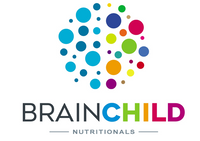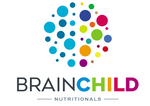How to Sleep With ADHD: The Benefits of Nutrition and Exercise for Children
Every child needs to have a good night of sleep. Unfortunately, many children are not getting the full nights sleep they need to grow and function at their best. 72.7 percent of students in grades 9 through 12 reports getting insufficient sleep. This impacts their abilities to learn, interact with others, and play.
The impacts are especially profound with children with ADHD. These children already struggle to pay attention in class, and sleep deprivation makes them more disoriented. But your child can learn how to sleep with ADHD symptoms. You just need to learn some basic facts and then teach them a few straightforward strategies. Here is your guide on sleep and ADHD.

ADHD and Sleep
ADHD inhibits many children from falling asleep. Their hyperactivity makes them stay up, even while they are lying in bed. They may find it hard to settle down or calm their racing thoughts. Sleep deprivation causes many symptoms, including irritability. Sleep deprivation can mask the signs of ADHD, delaying an initial diagnosis. After a child is diagnosed, sleep problems can make their disorder worse.
How much sleep a person needs changes as they get older. Preschoolers need 10 to 13 hours of sleep, some of which they can take through napping. School-age students need at least 9 hours, but they should get 10. But just having 10 hours of sleep is not enough. People also need good-quality sleep. They should wake up feeling refreshed.
Some people with ADHD can get 10 hours, but they do not get good-quality sleep. They wake up in the middle of the night. They feel stressed out and tired throughout the day. To help your child with ADHD, you must provide them with a long sleep duration and good-quality sleep. One or the other will not help them enough.

Strategies Before Going to Bed
Here are some proven strategies that ensure good, healthy sleep. The key is instituting beneficial habits like having a step by step regime at bedtime. Do not change the hours for one day so your child can watch a television show. A regular bedtime trains their brain to recognize when it should fall asleep.
You should do the same for when they wake up. Their brain will develop a rhythm to their internal clock naturally. Make sure that bedtime and wake-up time are at least 10 hours apart. Your child should also exercise for at least one hour every day. In addition to keeping them in shape, exercise will make them tired. Have them exercise in the afternoon since nighttime workouts can make it hard to sleep.
Prioritize Nutritional Supplementation
March is Nutrition Month. Talk to your kids about healthy eating. Eating balanced meals can help them fall asleep. Taking ADHD vitamin support can also help. Vitamins D and E help the body regulate sleep patterns. Let your child try a vitamin supplement and see if it helps them.
An ADHD mineral support often makes a big difference. Magnesium helps the brain produce melatonin, a hormone that induces sleep. Take it with water. Create a relaxing routine for bedtime. Your child can take a bath, or they can read a book. Keep the routine consistent so their brain can associate it with going to sleep.
Your child should not consume caffeine within five hours of bedtime. They should stop using electronics for an hour before bedtime. Electronic devices emit a blue light that the brain believes is sunlight, tricking it into staying up for longer. Your child's bedroom shouldn't have electronics besides a digital clock. Hang up blackout curtains to block light from entering their room. If your child has siblings, keep them in another room. They might wake your child up in the middle of the night.

How to Sleep With ADHD
Sleeping beneath a weighted blanket can help induce sleep. Some children with ADHD have poor proprioception, meaning they have difficulty knowing where their body is. A weighted blanket provides pressure onto joints, calming their central nervous system.
They should sleep on a mattress that provides good back support. If the mattress is too soft, they will sink into it and strain their muscles. If it is too hard, your child could pinch a nerve or bruise a limb while sleeping. Your child should also rest their head on a couple of pillows. The pillows should keep their spine straight, with their neck in a neutral alignment.
If your child is struggling to fall asleep, tell them to conduct deep breathing exercises. They should breathe in through their nose, inflating their stomach. Once it has inflated completely, they should breathe out. They can repeat this deep breathing until they fall asleep.
They should try to avoid thinking about how they are not falling asleep. This can make them anxious and keep them up. Tell your child to clear their head entirely. If your child wakes up in the middle of the night, try to keep them calm as much as possible. They should position their body in a comfortable position and wait to fall asleep.
If they are not asleep after 20 minutes, try having them repeat their bedtime routine. This can indicate to their brain that it is time to sleep. When they wake up, they should open the curtains and stand in front of their window. Exposure to sunlight energizes their brain.
Healthy Sleep Habits = Happy Child
Knowing how to sleep with ADHD is essential. Many children struggle to sleep because they are so hyperactive. Sleep deprivation can make ADHD worse. Schedule a regular bedtime for your child. Create a relaxing routine that eases them into sleep. Do not give them access to caffeine or electronics before bedtime. Give your child a weighted blanket and comfortable bed. Teach your child deep breathing techniques to calm them down. Let them re-enact their routine if they wake up at night.
Try the combination of these fundamental lifestyle habits and the use of our premium ADHD supplements. To learn more, you can book a consultation today.







